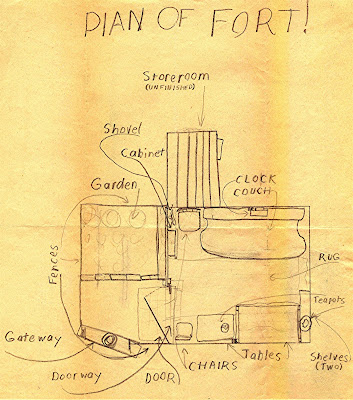Kids need their own community, and a special place to experience it. A clubhouse, especially one they built themselves, gives kids a sense of privacy and independence, a safe place to talk, socialize, or decide whether to paint the place. They learn about consensus, and find that its fun to plan a bike trip or a cookout together. It's much more rewarding than sitting alone in front of the tube, or even sitting alone and texting. Hanging out with a bigger group is a far richer experience.
This is the kind of community that emerged when our random group of kids decided to build a clubhouse. Somehow the idea of building the thing together cemented us more as a group; we had a common project that everyone could contribute to. One kid provided the backyard (no easy task), another had found some good wood, another could pound nails pretty good, and even the youngest kid with no building skills had a knack for finding the coolest clubhouse-furnishings in the trash. We spent Saturdays and after-school hours at our clubhouse for a couple of years, tearing it apart and fixing it up continuously. It was an adventure!
I wrote Keep Out! Build Your Own Backyard Clubhouse to inspire kids and supportive grownups to get together and build a place of their own in which to gather, socialize, be a community!





































